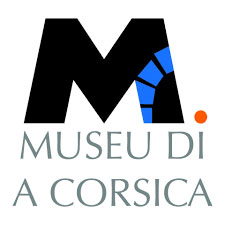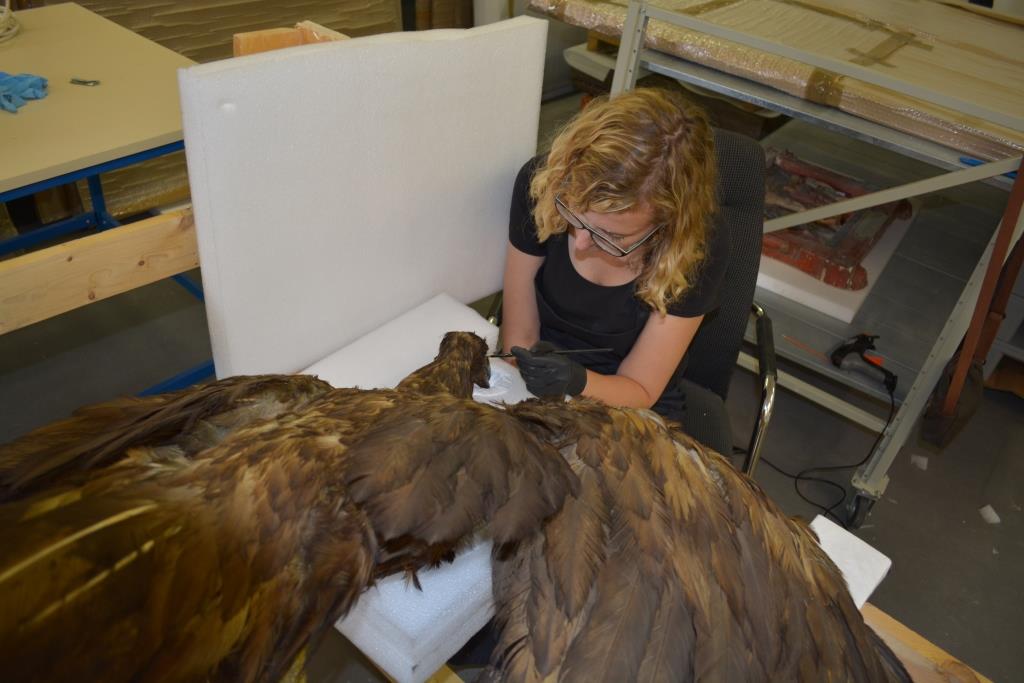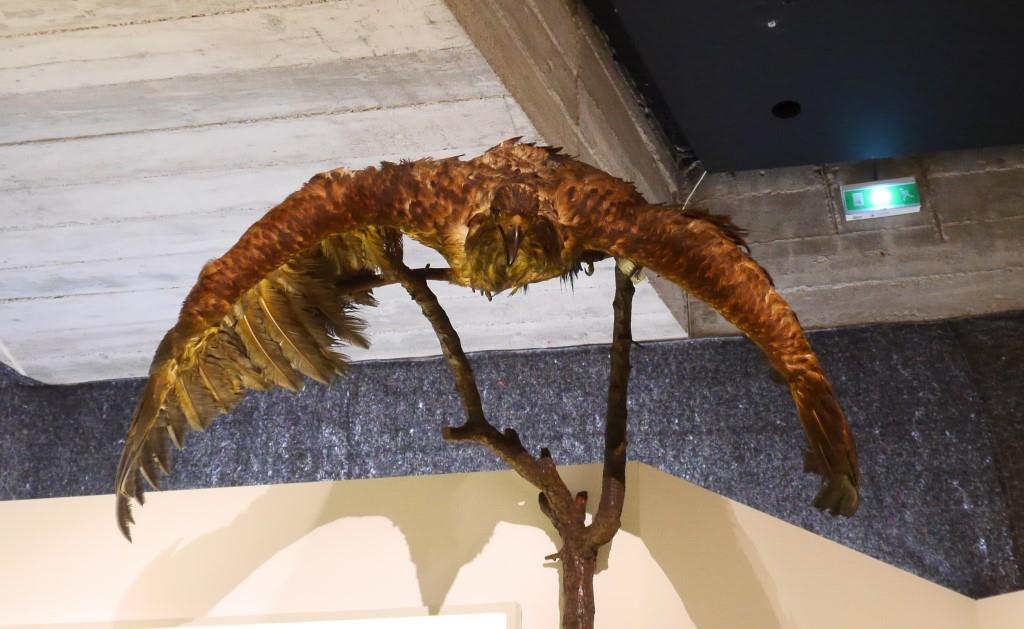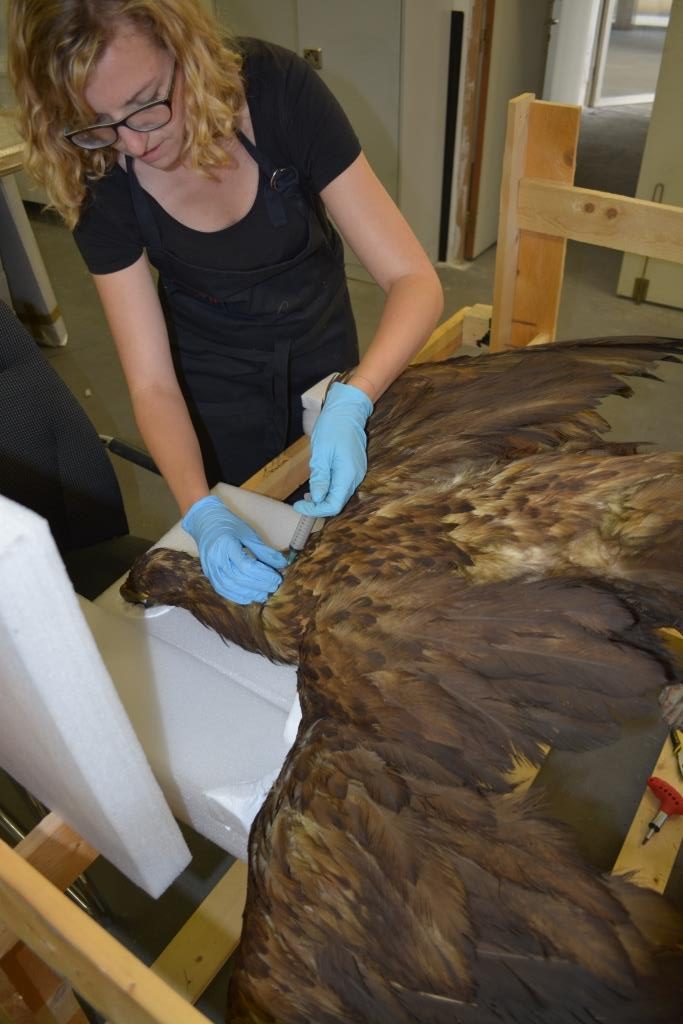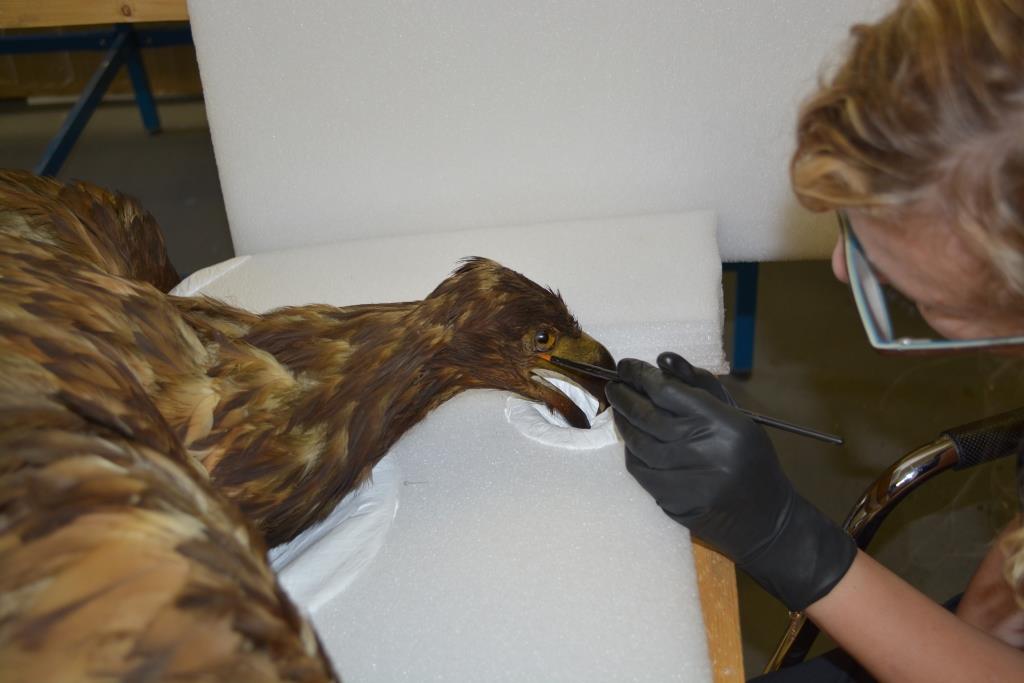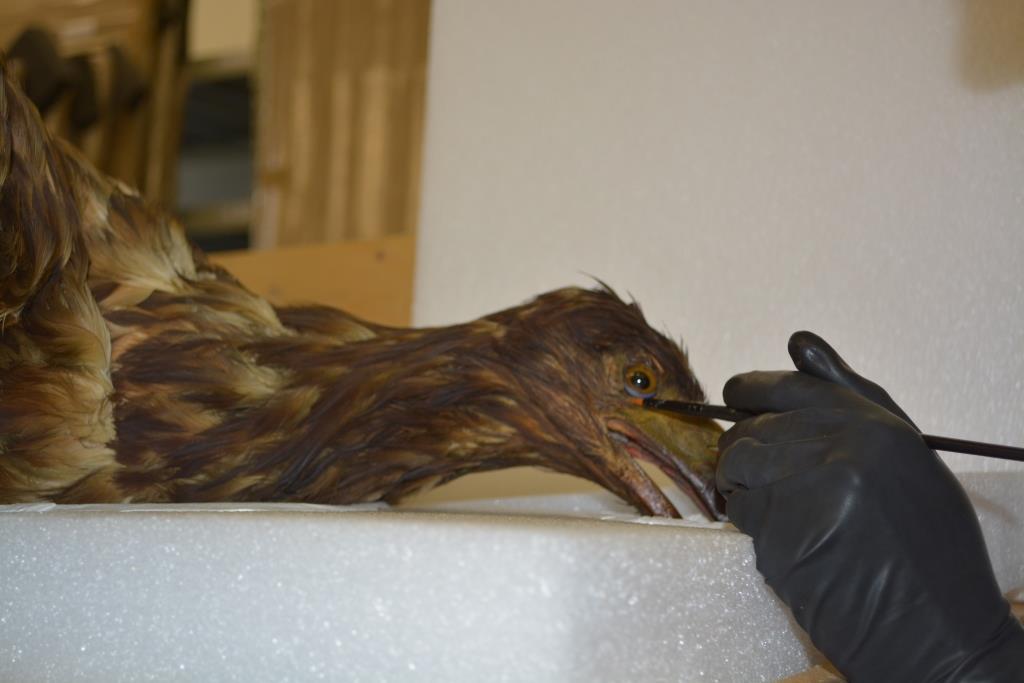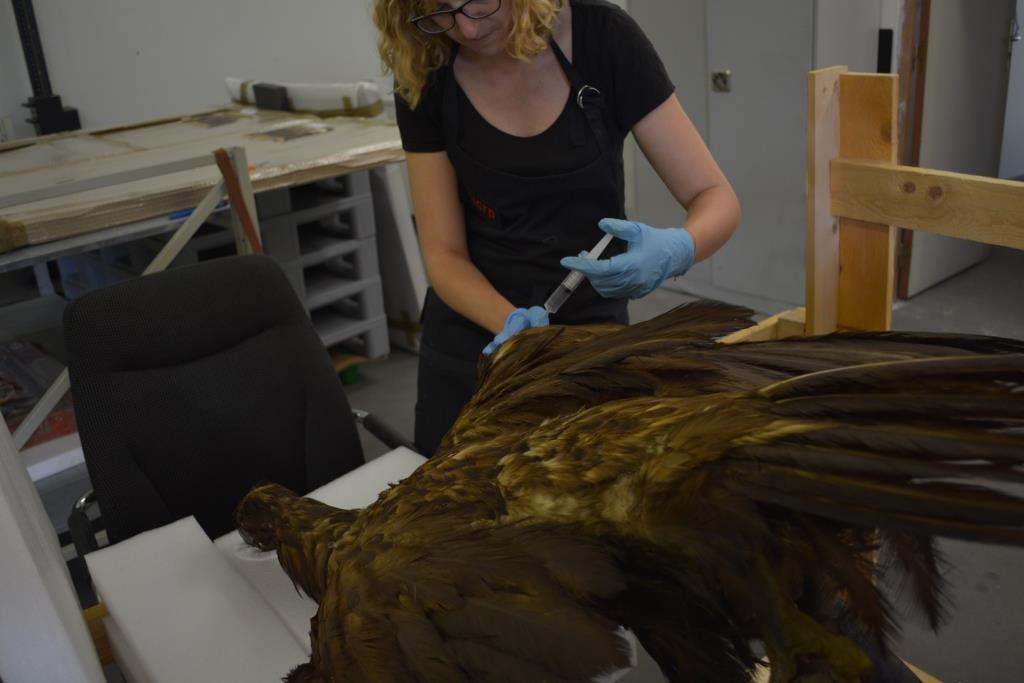The impressive raptor is on display through April 03, 2016 in the Corsican Museum’s temporary exhibition titled “Île(s).
Dimensions: 209 x 157 x 112 cm
The Pygargue eagle is one of Europe’s largest raptors and has disappeared from most of southern Europe, especially from Corsica and Sardinia. Naturalized specimens from the island are absent from major natural history collections (Muséum National d’Histoire Naturelle in Paris, Natural History Museum in the United Kingdom, and American Museum of Natural History in New York). The Museum of Corsica in Corte has one of the rare specimens in its collections.
But how to preserve such an object? This naturalized specimen made up largely of natural organic matter is indeed particularly vulnerable. Its main enemies are climatic variations, biological attacks, light but also bad handling. Indeed, after all these years, the eagle was very dirty and had tears on the wings These alterations and its sanitary condition weakened its structure and prevented any handling or even display of the specimen.
As the presentation and conservation of this specimen is important for the study, knowledge and conservation of the island’s heritage, the Museum of Corsica called upon a specialized conservator for its treatment.
Camille Alembik, a graduate of a Master’s degree in conservation-restoration from the Ecole Supérieure d’Art d’Avignon and the Master’s degree in Preventive Conservation from Paris la Sorbonne. She is specialized in natural organic materials and naturalia. She also works regularly for the Quai Branly Museum and for natural history collections such as the National Museum of Natural History in Paris, the Crozatier Museum in Le Puy en Velay or the Zabana Museum in Oran, Algeria.
So she undertook the cleaning and consolidation of the specimen and its base. After scouring and rearranging the feathers, the perforations and tears were consolidated with pieces of glued Japanese paper. These interventions are invisible and all materials used are neutral, stable, flexible, thus creating no interaction or tension within the constituent materials.
This will facilitate the handling, study, and especially the display of this impressive raptor.
